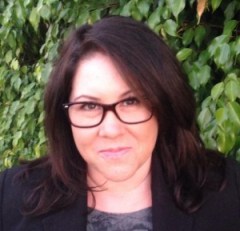I’ll be moderating a panel at the upcoming Bouchercon in Albany next week (September 19-22). It’s called “I’ve Loved These Days” and boy, that topic couldn’t be more appropriate for me. But even more exciting are my panelists: International Guest of Honor Anne Perry, Caroline Todd, Susanna Calkins, Anna Loan-Wilsey and Susanne Alleyn.
This is gonna be fun.
But let’s get back to that topic for a moment. “I’ve Loved These Days.” My debut novel, Mistress of Fortune, takes place in late 17th century London, during the latter part of King Charles II’s reign. I’ve known since I was a teenager that I would someday write a novel set in Restoration London featuring King Charles himself as a character. After all, I’ve had a crush on him since I was fifteen. It’s pretty much the only thing I knew when I first sat down to write Mistress of Fortune. Everything else–my protagonist, Isabel Wilde, a mistress to the king who secretly makes her living as a fortune teller and the plot itself–was born out of my desire to write about this time and place.
I’ve walked the streets of London from the Tower to Primrose Hill, searching for the 17th century London I’d created. But a big part of that walk was imagining that my characters were traveling right along side me.
During the writing of it, I soon discovered that the novel was about so much more than the setting I’d loved for so many years. For a novel to truly come to life, the setting becomes a backdrop and the characters take over. At least that’s what happened to me. I’ve walked the streets of London from the Tower to Primrose Hill, searching for the 17th century London I’d created. But a big part of that walk was imagining that my characters were traveling right along side me.
Susanna Calkins, one of my panelists who also writes during the Restoration period, recently wrote a great piece for Writer’s Digest: How to Write Historical Fiction. I’ve been giving the issue of research quite a bit of thought lately, not only because I’m preparing for the Bouchercon panel but because I’m currently writing book two in the Mistress of Fortune series. One of the questions I plan to ask my panelists is: “How important is authenticity in historical fiction? Is authenticity more important for historical fiction writers than authors of other types of fiction?”
As Susanna wrote in the WD post: “When I was first dreaming about my story, even before I had worked out the plot or characters, I knew one thing for sure: By gum, this novel would be accurate. Every detail, every word, would be accurate. Historians everywhere would use my book in their classes and would revel in my accurate tale. That idea lasted about two seconds.”
I don’t know any historical fiction author (or really, any author at all) who doesn’t go into it with the best of intentions. The drive for truth and authenticity is obsessive and unrelenting. But at some point, a writer must accept that a detail or two might be fudged, or in some cases, made up entirely. I’ll give you an example. Mistress of Fortune is based upon the real-life, unsolved murder of Sir Edmund Berry Godfrey. Though it’s not the most famous of unsolved murders, quite a bit has been written about it over the years and I had access to a great deal of reference material. In the first draft of the novel, I kept meticulously to the time line of the murder and its investigation. What I ended up with was a confusing and boring manuscript that bore little resemblance to either a proper non fiction account of the killing or an engaging historical mystery. In order to achieve my goal–to write a publishable historical mystery–I had to throw the real time line and many of the true life players out the window. What I ended up with was a fast paced and readable fictional account of Sir Edmund’s murder.
I don’t know any historical fiction author (or really, any author at all) who doesn’t go into it with the best of intentions. The drive for truth and authenticity is obsessive and unrelenting.
Of course, I explained what I’d done and offered up references for those readers who want the real story. As Susanna says, “that’s what the ‘historical note’ at the end of your novel is for.” Or, as Harlan Coben once said in one of the first Bouchercon panels I attended: “I make shit up.”
Regardless, to write historical fiction, one must have a deep and abiding love of the days of which they write. I can’t wait to explore this topic with some of the best historical crime fiction writers in the field.
Panel:
“I’ve Loved These Days”
Friday, 9/19 3:10pm
Featuring: Anne Perry, Caroline Todd, Susanna Calkins, Anna Loan-Wilsey, & Susanne Alleyn (Holly West, moderator)









You must be logged in to post a comment.